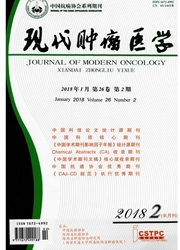

 中文摘要:
中文摘要:
Except for the most organized mature hepatocytes,liver stem/progenitor cells(LSPCs)can differentiate into many other types of cells in the liver including cholangiocytes.In addition,LSPCs are demonstrated to be able to give birth to other kinds of extra-hepatic cell types such as insulin-producing cells.Even more,under some bad conditions,these LSPCs could generate liver cancer stem like cells(LCSCs)through malignant transformation.In this review,we mainly concentrate on the molecular mechanisms for controlling cell fates of LSPCs,especially differentiation of cholangiocytes,insulin-producing cells and LCSCs.First of all,to certificate the cell fates of LSPCs,the following three features need to be taken into account to perform accurate phenotyping:(1)morphological properties;(2)specific markers;and(3)functional assessment including in vivo transplantation.Secondly,to promote LSPCs differentiation,systematical attention should be paid to inductive materials(such as growth factors and chemical stimulators),progressive materials including intracellular and extracellular signaling pathways,and implementary materials(such as liver enriched transcriptive factors).Accordingly,some recommendations were proposed to standardize,optimize,and enrich the effective production of cholangiocyte-like cells out of LSPCs.At the end,the potential regulating mechanisms for generation of cholangiocytes by LSPCs were carefully analyzed.The differentiation of LSPCs is a gradually progressing process,which consists of three main steps:initiation,progression and accomplishment.It’s the unbalanced distribution of affecting materials in each step decides the cell fates of LSPCs.
 英文摘要:
英文摘要:
Except for the most organized mature hepatocytes, liver stem/progenitor cells (LSPCs) can differentiate into many other types of cells in the liver including cholangiocytes. In addition, LSPCs are demonstrated to be able to give birth to other kinds of extra-hepatic cell types such as insulin-producing cells. Even more, under some bad conditions, these LSPCs could generate liver cancer stem like cells (LCSCs) through malignant transformation. In this review, we mainly concentrate on the molecular mechanisms for controlling cell fates of LSPCs, especially differentiation of cholangiocytes, insulin-producing cells and LCSCs. First of all, to certificate the cell fates of LSPCs, the following three features need to be taken into account to perform accurate phenotyping: (1) morphological properties; (2) specific markers; and (3) functional assessment including in vivo transplantation. Secondly, to promote LSPCs differentiation, systematical attention should be paid to inductive materials (such as growth factors and chemical stimulators), progressive materials including intracellular and extracellular signaling pathways, and implementary materials (such as liver enriched transcriptive factors). Accordingly, some recommendations were proposed to standardize, optimize, and enrich the effective production of cholangiocyte-like cells out of LSPCs. At the end, the potential regulating mechanisms for generation of cholangiocytes by LSPCs were carefully analyzed. The differentiation of LSPCs is a gradually progressing process, which consists of three main steps: initiation, progression and accomplishment. It’s the unbalanced distribution of affecting materials in each step decides the cell fates of LSPCs.
 同期刊论文项目
同期刊论文项目
 同项目期刊论文
同项目期刊论文
 MicroRNA-200a suppresses metastatic potential of Side Population cells in human hepatocellular carci
MicroRNA-200a suppresses metastatic potential of Side Population cells in human hepatocellular carci [An expression analysis of miR-200a in serum and liver tissue during the process of liver cancer dev
[An expression analysis of miR-200a in serum and liver tissue during the process of liver cancer dev Improved radiosensitizing effect of the combination of etanidazole and paclitaxel for hepatocellular
Improved radiosensitizing effect of the combination of etanidazole and paclitaxel for hepatocellular Downregulation of lncRNA-ATB correlates with clinical progression and unfavorable prognosis in pancr
Downregulation of lncRNA-ATB correlates with clinical progression and unfavorable prognosis in pancr 期刊信息
期刊信息
